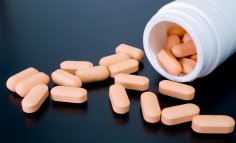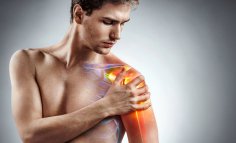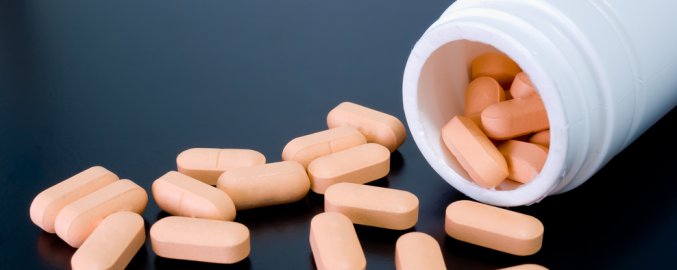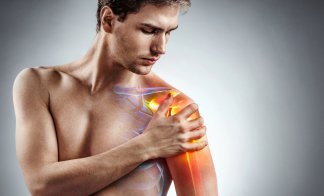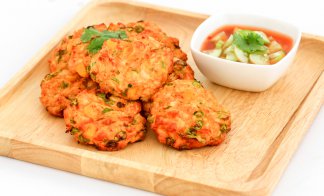Grunnet mitt fravær av treningsrapportering (og trening sådan) poster jeg 2 artikler som jeg mener er et must for oss alle. Enig eller uenig.
De har sikkert blitt lagt ut før, men det vet jeg ei noe om.
Link:
http://www.westonaprice.org/knowyourfats/skinny.htmlSo here goes:
The Skinny on FatsBy Mary Enig, PhD, and Sally FallonFrom: Nourishing Traditions: The Cookbook that Challenges Politically Correct Nutrition and the Diet Dictocrats, Second Edition by Sally Fallon with Mary G. Enig, PhD. © 1999 New Trends Publishing, Inc. All Rights Reserved. To order contact
www.newtrendspublishing.com Table of Contents
Introduction
The Lipid Hypothesis
The "Evidence" Supporting the Lipid Hypothesis
Studies that Challenge the Lipid Hypothesis
Understanding the Chemistry of Fats
Classification of Fatty Acids by Saturation
Classification of Fatty Acids by Length
The Dangers of Polyunsaturates
Too Much Omega-6
Too Little Omega-3
The Benefits of Saturated Fats
What About Cholesterol?
The Cause and Treatment of Heart Disease
Modern Methods of Processing Fat
Nutrients in Butter
Composition of Different Fats
Summary
About the Authors
References
IntroductionFats from animal and vegetable sources provide a concentrated source of energy in the diet; they also provide the building blocks for cell membranes and a variety of hormones and hormonelike substances. Fats as part of a meal slow down absorption so that we can go longer without feeling hungry. In addition, they act as carriers for important fat-soluble vitamins A, D, E and K. Dietary fats are needed for the conversion of carotene to vitamin A, for mineral absorption and for a host of other processes.
Politically Correct Nutrition is based on the assumption that we should reduce our intake of fats, particularly saturated fats from animal sources. Fats from animal sources also contain cholesterol, presented as the twin villain of the civilized diet.
The Lipid Hypothesis
The theory—called the lipid hypothesis—that there is a direct relationship between the amount of saturated fat and cholesterol in the diet and the incidence of coronary heart disease was proposed by a researcher named Ancel Keys in the late 1950's. Numerous subsequent studies have questioned his data and conclusions. Nevertheless, Keys' articles received far more publicity than those presenting alternate views. The vegetable oil and food processing industries, the main beneficiaries of any research that found fault with competing traditional foods, began promoting and funding further research designed to support the lipid hypothesis.
The most well-known advocate of the lowfat diet was Nathan Pritikin. Actually, Pritikin advocated elimination of sugar, white flour and all processed foods from the diet and recommended the use of fresh raw foods, whole grains and a strenuous exercise program; but it was the lowfat aspects of his regime that received the most attention in the media. Adherents found that they lost weight and that their blood cholesterol levels and blood pressure declined. The success of the Pritikin diet was probably due to a number of factors having nothing to do with reduction in dietary fat—weight loss alone, for example, will precipitate a reduction in blood cholesterol levels—but Pritikin soon found that the fat-free diet presented many problems, not the least of which was the fact that people just could not stay on it. Those who possessed enough will power to remain fat-free for any length of time developed a variety of health problems including low energy, difficulty in concentration, depression, weight gain and mineral deficiencies.1 Pritikin may have saved himself from heart disease but his lowfat diet did not spare him from cancer. He died, in the prime of life, of suicide when he realized that his Spartan regime was not curing his leukemia. We shouldn't have to die of either heart disease or cancer—or consume a diet that makes us depressed.
When problems with the no-fat regime became apparent, Pritikin introduced a small amount of fat from vegetable sources into his diet—something like 10% of the total caloric intake. Today the Diet Dictocrats advise us to limit fats to 25-30% of the caloric intake, which is about 2 1/2 ounces or 5 tablespoons per day for a diet of 2400 calories. A careful reckoning of fat intake and avoidance of animal fats, they say, is the key to perfect health.
The "Evidence" Supporting the Lipid Hypothesis
These "experts" assure us that the lipid hypothesis is backed by incontrovertible scientific proof. Most people would be surprised to learn that there is, in fact, very little evidence to support the contention that a diet low in cholesterol and saturated fat actually reduces death from heart disease or in any way increases one's life span. Consider the following:
Before 1920 coronary heart disease was rare in America; so rare that when a young internist named Paul Dudley White introduced the German electrocardiograph to his colleagues at Harvard University, they advised him to concentrate on a more profitable branch of medicine. The new machine revealed the presence of arterial blockages, thus permitting early diagnosis of coronary heart disease. But in those days clogged arteries were a medical rarity, and White had to search for patients who could benefit from his new technology. During the next forty years, however, the incidence of coronary heart disease rose dramatically, so much so that by the mid fifties heart disease was the leading cause of death among Americans. Today heart disease causes at least 40% of all US deaths. If, as we have been told, heart disease results from the consumption of saturated fats, one would expect to find a corresponding increase in animal fat in the American diet. Actually, the reverse is true. During the sixty-year period from 1910 to 1970, the proportion of traditional animal fat in the American diet declined from 83% to 62%, and butter consumption plummeted from eighteen pounds per person per year to four. During the past eighty years, dietary cholesterol intake has increased only 1%. During the same period the percentage of dietary vegetable oils in the form of margarine, shortening and refined oils increased about 400% while the consumption of sugar and processed foods increased about 60%.2
The Framingham Heart Study is often cited as proof of the lipid hypothesis. This study began in 1948 and involved some 6,000 people from the town of Framingham, Massachusetts. Two groups were compared at five-year intervals—those who consumed little cholesterol and saturated fat and those who consumed large amounts. After 40 years, the director of this study had to admit: "In Framingham, Mass, the more saturated fat one ate, the more cholesterol one ate, the more calories one ate, the lower the person's serum cholesterol. . . we found that the people who ate the most cholesterol, ate the most saturated fat, ate the most calories, weighed the least and were the most physically active."3 The study did show that those who weighed more and had abnormally high blood cholesterol levels were slightly more at risk for future heart disease; but weight gain and cholesterol levels had an inverse correlation with fat and cholesterol intake in the diet.4
In a multi-year British study involving several thousand men, half were asked to reduce saturated fat and cholesterol in their diets, to stop smoking and to increase the amounts of unsaturated oils such as margarine and vegetable oils. After one year, those on the "good" diet had 100% more deaths than those on the "bad" diet, in spite of the fact that those men on the "bad" diet continued to smoke! But in describing the study, the author ignored these results in favor of the politically correct conclusion: "The implication for public health policy in the U.K. is that a preventive programme such as we evaluated in this trial is probably effective. . . ."5
The U.S. Multiple Risk Factor Intervention Trial, (MRFIT) sponsored by the National Heart, Lung and Blood Institute, compared mortality rates and eating habits of over 12,000 men. Those with "good" dietary habits (reduced saturated fat and cholesterol, reduced smoking, etc.) showed a marginal reduction in total coronary heart disease, but their overall mortality from all causes was higher. Similar results have been obtained in several other studies. The few studies that indicate a correlation between fat reduction and a decrease in coronary heart disease mortality also document a concurrent increase in deaths from cancer, brain hemorrhage, suicide and violent death.6
The Lipid Research Clinics Coronary Primary Prevention Trial (LRC-CPPT), which cost 150 million dollars, is the study most often cited by the experts to justify lowfat diets. Actually, dietary cholesterol and saturated fat were not tested in this study as all subjects were given a low-cholesterol, low-saturated-fat diet. Instead, the study tested the effects of a cholesterol-lowering drug. Their statistical analysis of the results implied a 24% reduction in the rate of coronary heart disease in the group taking the drug compared with the placebo group; however, nonheart disease deaths in the drug group increased—deaths from cancer, stroke, violence and suicide.7 Even the conclusion that lowering cholesterol reduces heart disease is suspect. Independent researchers who tabulated the results of this study found no significant statistical difference in coronary heart disease death rates between the two groups.8 However, both the popular press and medical journals touted the LRC-CPPT as the long-sought proof that animal fats are the cause of heart disease, America's number one killer.
Studies that Challenge the Lipid Hypothesis
While it is true that researchers have induced heart disease in some animals by giving them extremely large dosages of oxidized or rancid cholesterol—amounts ten times that found in the ordinary human diet—several population studies squarely contradict the cholesterol-heart disease connection. A survey of 1700 patients with hardening of the arteries, conducted by the famous heart surgeon Michael DeBakey, found no relationship between the level of cholesterol in the blood and the incidence of atherosclerosis.9 A survey of South Carolina adults found no correlation of blood cholesterol levels with "bad" dietary habits, such as use of red meat, animal fats, fried foods, butter, eggs, whole milk, bacon, sausage and cheese.10 A Medical Research Council survey showed that men eating butter ran half the risk of developing heart disease as those using margarine.11
Mother's milk provides a higher proportion of cholesterol than almost any other food. It also contains over 50% of its calories as fat, much of it saturated fat. Both cholesterol and saturated fat are essential for growth in babies and children, especially the development of the brain.12 Yet, the American Heart Association is now recommending a low-cholesterol, lowfat diet for children! Commercial formulas are low in saturated fats and soy formulas are devoid of cholesterol. A recent study linked lowfat diets with failure to thrive in children.13
Numerous surveys of traditional populations have yielded information that is an embarrassment to the Diet Dictocrats. For example, a study comparing Jews when they lived in Yemen, whose diets contained fats solely of animal origin, to Yemenite Jews living in Israel, whose diets contained margarine and vegetable oils, revealed little heart disease or diabetes in the former group but high levels of both diseases in the latter.14 (The study also noted that the Yemenite Jews consumed no sugar but those in Israel consumed sugar in amounts equaling 25-30% of total carbohydrate intake.) A comparison of populations in northern and southern India revealed a similar pattern. People in northern India consume 17 times more animal fat but have an incidence of coronary heart disease seven times lower than people in southern India.15 The Masai and kindred tribes of Africa subsist largely on milk, blood and beef. They are free from coronary heart disease and have excellent blood cholesterol levels.16 Eskimos eat liberally of animal fats from fish and marine animals. On their native diet they are free of disease and exceptionally hardy.17 An extensive study of diet and disease patterns in China found that the region in which the populace consumes large amounts of whole milk had half the rate of heart disease as several districts in which only small amounts of animal products are consumed.18 Several Mediterranean societies have low rates of heart disease even though fat—including highly saturated fat from lamb, sausage and goat cheese—comprises up to 70% of their caloric intake. The inhabitants of Crete, for example, are remarkable for their good health and longevity.19 A study of Puerto Ricans revealed that, although they consume large amounts of animal fat, they have a very low incidence of colon and breast cancer.20 A study of the long-lived inhabitants of Soviet Georgia revealed that those who eat the most fatty meat live the longest.21 In Okinawa, where the average life span for women is 84 years—longer than in Japan—the inhabitants eat generous amounts of pork and seafood and do all their cooking in lard.22 None of these studies is mentioned by those urging restriction of saturated fats.
The relative good health of the Japanese, who have the longest life span of any nation in the world, is generally attributed to a lowfat diet. Although the Japanese eat few dairy fats, the notion that their diet is low in fat is a myth; rather, it contains moderate amounts of animal fats from eggs, pork, chicken, beef, seafood and organ meats. With their fondness for shellfish and fish broth, eaten on a daily basis, the Japanese probably consume more cholesterol than most Americans. What they do not consume is a lot of vegetable oil, white flour or processed food (although they do eat white rice.) The life span of the Japanese has increased since World War II with an increase in animal fat and protein in the diet.23 Those who point to Japanese statistics to promote the lowfat diet fail to mention that the Swiss live almost as long on one of the fattiest diets in the world. Tied for third in the longevity stakes are Austria and Greece—both with high-fat diets.24
As a final example, let us consider the French. Anyone who has eaten his way across France has observed that the French diet is just loaded with saturated fats in the form of butter, eggs, cheese, cream, liver, meats and rich patés. Yet the French have a lower rate of coronary heart disease than many other western countries. In the United States, 315 of every 100,000 middle-aged men die of heart attacks each year; in France the rate is 145 per 100,000. In the Gascony region, where goose and duck liver form a staple of the diet, this rate is a remarkably low 80 per 100,000.25 This phenomenon has recently gained international attention as the French Paradox. (The French do suffer from many degenerative diseases, however. They eat large amounts of sugar and white flour and in recent years have succumbed to the timesaving temptations of processed foods.)
A chorus of establishment voices, including the American Cancer Society, the National Cancer Institute and the Senate Committee on Nutrition and Human Needs, claims that animal fat is linked not only with heart disease but also with cancers of various types. Yet when researchers from the University of Maryland analyzed the data they used to make such claims, they found that vegetable fat consumption was correlated with cancer and animal fat was not.26
Understanding the Chemistry of Fats
Clearly something is wrong with the theories we read in the popular press—and used to bolster sales of lowfat concoctions and cholesterol-free foods. The notion that saturated fats per se cause heart disease as well as cancer is not only facile, it is just plain wrong. But it is true that some fats are bad for us. In order to understand which ones, we must know something about the chemistry of fats.
Fats—or lipids—are a class of organic substances that are not soluble in water. In simple terms, fatty acids are chains of carbon atoms with hydrogen atoms filling the available bonds. Most fat in our bodies and in the food we eat is in the form of triglycerides, that is, three fatty-acid chains attached to a glycerol molecule. Elevated triglycerides in the blood have been positively linked to proneness to heart disease, but these triglycerides do not come directly from dietary fats; they are made in the liver from any excess sugars that have not been used for energy. The source of these excess sugars is any food containing carbohydrates, particularly refined sugar and white flour.
Classification of Fatty Acids by Saturation
Fatty acids are classified in the following way:
Saturated: A fatty acid is saturated when all available carbon bonds are occupied by a hydrogen atom. They are highly stable, because all the carbon-atom linkages are filled—or saturated—with hydrogen. This means that they do not normally go rancid, even when heated for cooking purposes. They are straight in form and hence pack together easily, so that they form a solid or semisolid fat at room temperature. Your body makes saturated fatty acids from carbohydrates and they are found in animal fats and tropical oils.
Monounsaturated: Monounsaturated fatty acids have one double bond in the form of two carbon atoms double-bonded to each other and, therefore, lack two hydrogen atoms. Your body makes monounsaturated fatty acids from saturated fatty acids and uses them in a number of ways. Monounsaturated fats have a kink or bend at the position of the double bond so that they do not pack together as easily as saturated fats and, therefore, tend to be liquid at room temperature. Like saturated fats, they are relatively stable. They do not go rancid easily and hence can be used in cooking. The monounsaturated fatty acid most commonly found in our food is oleic acid, the main component of olive oil as well as the oils from almonds, pecans, cashews, peanuts and avocados.
Polyunsaturated: Polyunsaturated fatty acids have two or more pairs of double bonds and, therefore, lack four or more hydrogen atoms. The two polyunsaturated fatty acids found most frequently in our foods are double unsaturated linoleic acid, with two double bonds—also called omega-6; and triple unsaturated linolenic acid, with three double bonds—also called omega-3. (The omega number indicates the position of the first double bond.) Your body cannot make these fatty acids and hence they are called "essential." We must obtain our essential fatty acids or EFA's from the foods we eat. The polyunsaturated fatty acids have kinks or turns at the position of the double bond and hence do not pack together easily. They are liquid, even when refrigerated. The unpaired electrons at the double bonds makes these oils highly reactive. They go rancid easily, particularly omega-3 linolenic acid, and must be treated with care. Polyunsaturated oils should never be heated or used in cooking. In nature, the polyunsaturated fatty acids are usually found in the cis form, which means that both hydrogen atoms at the double bond are on the same side.
All fats and oils, whether of vegetable or animal origin, are some combination of saturated fatty acids, monounsaturated fatty acids and polyunsaturated linoleic acid and linolenic acid. In general, animal fats such as butter, lard and tallow contain about 40-60% saturated fat and are solid at room temperature. Vegetable oils from northern climates contain a preponderance of polyunsaturated fatty acids and are liquid at room temperature. But vegetable oils from the tropics are highly saturated. Coconut oil, for example, is 92% saturated. These fats are liquid in the tropics but hard as butter in northern climes. Vegetable oils are more saturated in hot climates because the increased saturation helps maintain stiffness in plant leaves. Olive oil with its preponderance of oleic acid is the product of a temperate climate. It is liquid at warm temperatures but hardens when refrigerated.
Classification of Fatty Acids by Length
Researchers classify fatty acids not only according to their degree of saturation but also by their length.
Short-chain fatty acids have four to six carbon atoms. These fats are always saturated. Four-carbon butyric acid is found mostly in butterfat from cows, and six-carbon capric acid is found mostly in butterfat from goats. These fatty acids have antimicrobial properties—that is, they protect us from viruses, yeasts and pathogenic bacteria in the gut. They do not need to be acted on by the bile salts but are directly absorbed for quick energy. For this reason, they are less likely to cause weight gain than olive oil or commercial vegetable oils.27 Short-chain fatty acids also contribute to the health of the immune system.28
Medium-chain fatty acids have eight to twelve carbon atoms and are found mostly in butterfat and the tropical oils. Like the short-chain fatty acids, these fats have antimicrobial properties; are absorbed directly for quick energy; and contribute to the health of the immune system.
Long-chain fatty acids have from 14 to 18 carbon atoms and can be either saturated, monounsaturated or polyunsaturated. Stearic acid is an 18-carbon saturated fatty acid found chiefly in beef and mutton tallows. Oleic acid is an 18-carbon monounsaturated fat which is the chief component of olive oil. Another monounsaturated fatty acid is the 16-carbon palmitoleic acid which has strong antimicrobial properties. It is found almost exclusively in animal fats. The two essential fatty acids are also long chain, each 18 carbons in length. Another important long-chain fatty acid is gamma-linolenic acid (GLA) which has 18 carbons and three double bonds. It is found in evening primrose, borage and black currant oils. Your body makes GLA out of omega-6 linoleic acid and uses it in the production of substances called prostaglandins, localized tissue hormones that regulate many processes at the cellular level.
Very-long-chain fatty acids have 20 to 24 carbon atoms. They tend to be highly unsaturated, with four, five or six double bonds. Some people can make these fatty acids from EFA's, but others, particularly those whose ancestors ate a lot of fish, lack enzymes to produce them. These "obligate carnivores" must obtain them from animal foods such as organ meats, egg yolks, butter and fish oils. The most important very-long-chain fatty acids are dihomo-gamma-linolenic acid (DGLA) with 20 carbons and three double bonds; arachidonic acid (AA) with 20 carbons and four double bonds; eicosapentaenoic acid (EPA) with 20 carbons and five double bonds; and docosahexaenoic acid (DHA) with 22 carbons and six double bonds. All of these except DHA are used in the production of prostaglandins, localized tissue hormones that direct many processes in the cells. In addition, AA and DHA play important roles in the function of the nervous system.29
The Dangers of Polyunsaturates
The public has been fed a great deal of misinformation about the relative virtues of saturated fats versus polyunsaturated oils. Politically correct dietary gurus tell us that the polyunsaturated oils are good for us and that the saturated fats cause cancer and heart disease. The result is that fundamental changes have occurred in the Western diet. At the turn of the century, most of the fatty acids in the diet were either saturated or monounsaturated, primarily from butter, lard, tallows, coconut oil and small amounts of olive oil. Today most of the fats in the diet are polyunsaturated from vegetable oils derived mostly from soy, as well as from corn, safflower and canola.
Modern diets can contain as much as 30% of calories as polyunsaturated oils, but scientific research indicates that this amount is far too high. The best evidence indicates that our intake of polyunsaturates should not be much greater than 4% of the caloric total, in approximate proportions of 1 1/2 % omega-3 linolenic acid and 2 1/2 % omega-6 linoleic acid.30 EFA consumption in this range is found in native populations in temperate and tropical regions whose intake of polyunsaturated oils comes from the small amounts found in legumes, grains, nuts, green vegetables, fish, olive oil and animal fats but not from commercial vegetable oils.
Excess consumption of polyunsaturated oils has been shown to contribute to a large number of disease conditions including increased cancer and heart disease; immune system dysfunction; damage to the liver, reproductive organs and lungs; digestive disorders; depressed learning ability; impaired growth; and weight gain.31
One reason the polyunsaturates cause so many health problems is that they tend to become oxidized or rancid when subjected to heat, oxygen and moisture as in cooking and processing. Rancid oils are characterized by free radicals—that is, single atoms or clusters with an unpaired electron in an outer orbit. These compounds are extremely reactive chemically. They have been characterized as "marauders" in the body for they attack cell membranes and red blood cells and cause damage in DNA/RNA strands, thus triggering mutations in tissue, blood vessels and skin. Free radical damage to the skin causes wrinkles and premature aging; free radical damage to the tissues and organs sets the stage for tumors; free radical damage in the blood vessels initiates the buildup of plaque. Is it any wonder that tests and studies have repeatedly shown a high correlation between cancer and heart disease with the consumption of polyunsaturates?32 New evidence links exposure to free radicals with premature aging, with autoimmune diseases such as arthritis and with Parkinson's disease, Lou Gehrig's disease, Alzheimer's and cataracts.33
Too Much Omega-6
Problems associated with an excess of polyunsaturates are exacerbated by the fact that most polyunsaturates in commercial vegetable oils are in the form of double unsaturated omega-6 linoleic acid, with very little of vital triple unsaturated omega-3 linolenic acid. Recent research has revealed that too much omega-6 in the diet creates an imbalance that can interfere with production of important prostaglandins.34 This disruption can result in increased tendency to form blood clots, inflammation, high blood pressure, irritation of the digestive tract, depressed immune function, sterility, cell proliferation, cancer and weight gain.35
Too Little Omega-3
A number of researchers have argued that along with a surfeit of omega-6 fatty acids the American diet is deficient in the more unsaturated omega-3 linolenic acid. This fatty acid is necessary for cell oxidation, for metabolizing important sulphur-containing amino acids and for maintaining proper balance in prostaglandin production. Deficiencies have been associated with asthma, heart disease and learning deficiencies.36 Most commercial vegetable oils contain very little omega-3 linolenic acid and large amounts of the omega-6 linoleic acid. In addition, modern agricultural and industrial practices have reduced the amount of omega-3 fatty acids in commercially available vegetables, eggs, fish and meat. For example, organic eggs from hens allowed to feed on insects and green plants can contain omega-6 and omega-3 fatty acids in the beneficial ratio of approximately one-to-one; but commercial supermarket eggs can contain as much as nineteen times more omega-6 than omega-3!37
The Benefits of Saturated Fats
The much-maligned saturated fats—which Americans are trying to avoid—are not the cause of our modern diseases. In fact, they play many important roles in the body chemistry:
Saturated fatty acids constitute at least 50% of the cell membranes. They are what gives our cells necessary stiffness and integrity.
They play a vital role in the health of our bones. For calcium to be effectively incorporated into the skeletal structure, at least 50% of the dietary fats should be saturated.38
They lower Lp(a), a substance in the blood that indicates proneness to heart disease.39 They protect the liver from alcohol and other toxins, such as Tylenol.40
They enhance the immune system.41
They are needed for the proper utilization of essential fatty acids.
Elongated omega-3 fatty acids are better retained in the tissues when the diet is rich in saturated fats. 42
Saturated 18-carbon stearic acid and 16-carbon palmitic acid are the preferred foods for the heart, which is why the fat around the heart muscle is highly saturated.43 The heart draws on this reserve of fat in times of stress.
Short- and medium-chain saturated fatty acids have important antimicrobial properties. They protect us against harmful microorganisms in the digestive tract.
The scientific evidence, honestly evaluated, does not support the assertion that "artery-clogging" saturated fats cause heart disease.44 Actually, evaluation of the fat in artery clogs reveals that only about 26% is saturated. The rest is unsaturated, of which more than half is polyunsaturated.45
What about Cholesterol?
And what about cholesterol? Here, too, the public has been misinformed. Our blood vessels can become damaged in a number of ways—through irritations caused by free radicals or viruses, or because they are structurally weak—and when this happens, the body's natural healing substance steps in to repair the damage. That substance is cholesterol. Cholesterol is a high-molecular-weight alcohol that is manufactured in the liver and in most human cells. Like saturated fats, the cholesterol we make and consume plays many vital roles:
Along with saturated fats, cholesterol in the cell membrane gives our cells necessary stiffness and stability. When the diet contains an excess of polyunsaturated fatty acids, these replace saturated fatty acids in the cell membrane, so that the cell walls actually become flabby. When this happens, cholesterol from the blood is "driven" into the tissues to give them structural integrity. This is why serum cholesterol levels may go down temporarily when we replace saturated fats with polyunsaturated oils in the diet.46
Cholesterol acts as a precursor to vital corticosteroids, hormones that help us deal with stress and protect the body against heart disease and cancer; and to the sex hormones like androgen, testosterone, estrogen and progesterone.
Cholesterol is a precursor to vitamin D, a very important fat-soluble vitamin needed for healthy bones and nervous system, proper growth, mineral metabolism, muscle tone, insulin production, reproduction and immune system function.
The bile salts are made from cholesterol. Bile is vital for digestion and assimilation of fats in the diet.
Recent research shows that cholesterol acts as an antioxidant.47 This is the likely explanation for the fact that cholesterol levels go up with age. As an antioxidant, cholesterol protects us against free radical damage that leads to heart disease and cancer.
Cholesterol is needed for proper function of serotonin receptors in the brain.48 Serotonin is the body's natural "feel-good" chemical. Low cholesterol levels have been linked to aggressive and violent behavior, depression and suicidal tendencies.
Mother's milk is especially rich in cholesterol and contains a special enzyme that helps the baby utilize this nutrient. Babies and children need cholesterol-rich foods throughout their growing years to ensure proper development of the brain and nervous system.
Dietary cholesterol plays an important role in maintaining the health of the intestinal wall.49 This is why low-cholesterol vegetarian diets can lead to leaky gut syndrome and other intestinal disorders.
Cholesterol is not the cause of heart disease but rather a potent antioxidant weapon against free radicals in the blood, and a repair substance that helps heal arterial damage (although the arterial plaques themselves contain very little cholesterol.) However, like fats, cholesterol may be damaged by exposure to heat and oxygen. This damaged or oxidized cholesterol seems to promote both injury to the arterial cells as well as a pathological buildup of plaque in the arteries.50 Damaged cholesterol is found in powdered eggs, in powdered milk (added to reduced-fat milks to give them body) and in meats and fats that have been heated to high temperatures in frying and other high-temperature processes.
High serum cholesterol levels often indicate that the body needs cholesterol to protect itself from high levels of altered, free-radical-containing fats. Just as a large police force is needed in a locality where crime occurs frequently, so cholesterol is needed in a poorly nourished body to protect the individual from a tendency to heart disease and cancer. Blaming coronary heart disease on cholesterol is like blaming the police for murder and theft in a high crime area.
Poor thyroid function (hypothyroidism) will often result in high cholesterol levels. When thyroid function is poor, usually due to a diet high in sugar and low in usable iodine, fat-soluble vitamins and other nutrients, the body floods the blood with cholesterol as an adaptive and protective mechanism, providing a superabundance of materials needed to heal tissues and produce protective steroids. Hypothyroid individuals are particularly susceptible to infections, heart disease and cancer.51
The Cause and Treatment of Heart Disease
The cause of heart disease is not animal fats and cholesterol but rather a number of factors inherent in modern diets, including excess consumption of vegetables oils and hydrogenated fats; excess consumption of refined carbohydrates in the form of sugar and white flour; mineral deficiencies, particularly low levels of protective magnesium and iodine; deficiencies of vitamins, particularly of vitamin C, needed for the integrity of the blood vessel walls, and of antioxidants like selenium and vitamin E, which protect us from free radicals; and, finally, the disappearance of antimicrobial fats from the food supply, namely, animal fats and tropical oils.52 These once protected us against the kinds of viruses and bacteria that have been associated with the onset of pathogenic plaque leading to heart disease.
While serum cholesterol levels provide an inaccurate indication of future heart disease, a high level of a substance called homocysteine in the blood has been positively correlated with pathological buildup of plaque in the arteries and the tendency to form clots—a deadly combination. Folic acid, vitamin B6, vitamin B12 and choline are nutrients that lower serum homocysteine levels.53 These nutrients are found mostly in animal foods.
The best way to treat heart disease, then, is not to focus on lowering cholesterol—either by drugs or diet—but to consume a diet that provides animal foods rich in vitamins B6 and B12; to bolster thyroid function by daily use of natural sea salt, a good source of usable iodine; to avoid vitamin and mineral deficiencies that make the artery walls more prone to ruptures and the buildup of plaque; to include the antimicrobial fats in the diet; and to eliminate processed foods containing refined carbohydrates, oxidized cholesterol and free-radical-containing vegetable oils that cause the body to need constant repair.
Modern Methods of Processing Fats
It is important to understand that, of all substances ingested by the body, it is polyunsaturated oils that are most easily rendered dangerous by food processing, especially unstable omega-3 linolenic acid. Consider the following processes inflicted upon naturally occurring fatty acids before they appear on our tables:
Extraction: Oils naturally occurring in fruits, nuts and seeds must first be extracted. In the old days this extraction was achieved by slow-moving stone presses. But oils processed in large factories are obtained by crushing the oil-bearing seeds and heating them to 230 degrees. The oil is then squeezed out at pressures from 10 to 20 tons per inch, thereby generating more heat. During this process the oils are exposed to damaging light and oxygen. In order to extract the last 10% or so of the oil from crushed seeds, processors treat the pulp with one of a number of solvents—usually hexane. The solvent is then boiled off, although up to 100 parts per million may remain in the oil. Such solvents, themselves toxic, also retain the toxic pesticides adhering to seeds and grains before processing begins.
High-temperature processing causes the weak carbon bonds of unsaturated fatty acids, especially triple unsaturated linolenic acid, to break apart, thereby creating dangerous free radicals. In addition, antioxidants, such as fat-soluble vitamin E, which protect the body from the ravages of free radicals, are neutralized or destroyed by high temperatures and pressures. BHT and BHA, both suspected of causing cancer and brain damage, are often added to these oils to replace vitamin E and other natural preservatives destroyed by heat.
There is a safe modern technique for extraction that drills into the seeds and extracts the oil and its precious cargo of antioxidants under low temperatures, with minimal exposure to light and oxygen. These expeller-expressed, unrefined oils will remain fresh for a long time if stored in the refrigerator in dark bottles. Extra virgin olive oil is produced by crushing olives between stone or steel rollers. This process is a gentle one that preserves the integrity of the fatty acids and the numerous natural preservatives in olive oil. If olive oil is packaged in opaque containers, it will retain its freshness and precious store of antioxidants for many years.
Hydrogenation: This is the process that turns polyunsaturates, normally liquid at room temperature, into fats that are solid at room temperature—margarine and shortening. To produce them, manufacturers begin with the cheapest oils—soy, corn, cottonseed or canola, already rancid from the extraction process—and mix them with tiny metal particles—usually nickel oxide. The oil with its nickel catalyst is then subjected to hydrogen gas in a high-pressure, high-temperature reactor. Next, soap-like emulsifiers and starch are squeezed into the mixture to give it a better consistency; the oil is yet again subjected to high temperatures when it is steam-cleaned. This removes its unpleasant odor. Margarine's natural color, an unappetizing grey, is removed by bleach. Dyes and strong flavors must then be added to make it resemble butter. Finally, the mixture is compressed and packaged in blocks or tubs and sold as a health food.
Partially hydrogenated margarines and shortenings are even worse for you than the highly refined vegetable oils from which they are made because of chemical changes that occur during the hydrogenation process. Under high temperatures, the nickel catalyst causes the hydrogen atoms to change position on the fatty acid chain. Before hydrogenation, pairs of hydrogen atoms occur together on the chain, causing the chain to bend slightly and creating a concentration of electrons at the site of the double bond. This is called the cis formation, the configuration most commonly found in nature. With hydrogenation, one hydrogen atom of the pair is moved to the other side so that the molecule straightens. This is called the trans formation, rarely found in nature. Most of these man-made trans fats are toxins to the body, but unfortunately your digestive system does not recognize them as such. Instead of being eliminated, trans fats are incorporated into cell membranes as if they were cis fats—your cells actually become partially hydrogenated! Once in place, trans fatty acids with their misplaced hydrogen atoms wreak havoc in cell metabolism because chemical reactions can only take place when electrons in the cell membranes are in certain arrangements or patterns, which the hydrogenation process has disturbed.
In the 1940's, researchers found a strong correlation between cancer and the consumption of fat—the fats used were hydrogenated fats although the results were presented as though the culprit were saturated fats.54 In fact, until recently saturated fats were usually lumped together with trans fats in the various U.S. data bases that researchers use to correlate dietary trends with disease conditions.55 Thus, natural saturated fats were tarred with the black brush of unnatural hydrogenated vegetable oils.
Altered partially hydrogenated fats made from vegetable oils actually block utilization of essential fatty acids, causing many deleterious effects including sexual dysfunction, increased blood cholesterol and paralysis of the immune system.56 Consumption of hydrogenated fats is associated with a host of other serious diseases, not only cancer but also atherosclerosis, diabetes, obesity, immune system dysfunction, low-birth-weight babies, birth defects, decreased visual acuity, sterility, difficulty in lactation and problems with bones and tendons.57 Yet hydrogenated fats continue to be promoted as health foods. The popularity of partially hydrogenated margarine over butter represents a triumph of advertising duplicity over common sense. Your best defense is to avoid it like the plague.
Homogenization: This is the process whereby the fat particles of cream are strained through tiny pores under great pressure. The resulting fat particles are so small that they stay in suspension rather than rise to the top of the milk. This makes the fat and cholesterol more susceptible to rancidity and oxidation, and some research indicates that homogenized fats may contribute to heart disease.58
The media's constant attack on saturated fats is extremely suspect. Claims that butter causes chronic high cholesterol values have not been substantiated by research—although some studies show that butter consumption causes a small, temporary rise—while other studies have shown that stearic acid, the main component of beef fat, actually lowers cholesterol.59 Margarine, on the other hand, provokes chronic high levels of cholesterol and has been linked to both heart disease and cancer.60 The new soft margarines or tub spreads, while lower in hydrogenated fats, are still produced from rancid vegetable oils and contain many additives.
Nutrients in Butter
The Diet Dictocrats have succeeded in convincing Americans that butter is dangerous, when in fact it is a valued component of many traditional diets and a source of the following nutrients:
Fat-Soluble Vitamins: These include true vitamin A or retinol, vitamin D, vitamin K and vitamin E as well as all their naturally occurring cofactors needed to obtain maximum effect. Butter is America's best source of these important nutrients. In fact, vitamin A is more easily absorbed and utilized from butter than from other sources.61 Fortunately, these fat-soluble vitamins are relatively stable and survive the pasteurization process.
When Dr. Weston Price studied isolated traditional peoples around the world, he found that butter was a staple in many native diets. (He did not find any isolated peoples who consumed polyunsaturated oils.) The groups he studied particularly valued the deep yellow butter produced by cows feeding on rapidly growing green grass. Their natural intuition told them that its life-giving qualities were especially beneficial for children and expectant mothers. When Dr. Price analyzed this deep yellow butter he found that it was exceptionally high in all fat-soluble vitamins, particularly vitamin A. He called these vitamins "catalysts" or "activators." Without them, according to Dr. Price, we are not able to utilize the minerals we ingest, no matter how abundant they may be in our diets. He also believed the fat-soluble vitamins to be necessary for absorption of the water-soluble vitamins. Vitamins A and D are essential for growth, for healthy bones, for proper development of the brain and nervous systems and for normal sexual development. Many studies have shown the importance of butterfat for reproduction; its absence results in "nutritional castration," the failure to bring out male and female sexual characteristics. As butter consumption in America has declined, sterility rates and problems with sexual development have increased. In calves, butter substitutes are unable to promote growth or sustain reproduction.62
Not all the societies Dr. Price studied ate butter; but all the groups he observed went to great lengths to obtain foods high in fat-soluble vitamins—fish, shellfish, fish eggs, organ meats, blubber of sea animals and insects. Without knowing the names of the vitamins contained in these foods, isolated traditional societies recognized their importance in the diet and liberally ate the animal products containing them. They rightly believed such foods to be necessary for fertility and the optimum development of children. Dr. Price analyzed the nutrient content of native diets and found that they consistently provided about ten times more fat soluble vitamins than the American diet of the 1930's. This ratio is probably more extreme today as Americans have deliberately reduced animal fat consumption. Dr. Price realized that these fat-soluble vitamins promoted the beautiful bone structure, wide palate, flawless uncrowded teeth and handsome, well-proportioned faces that characterized members of isolated traditional groups. American children in general do not eat fish or organ meats, at least not to any great extent, and blubber and insects are not a part of the western diet; many will not eat eggs. The only good source of fat-soluble vitamins in the American diet, one sure to be eaten, is butterfat. Butter added to vegetables and spread on bread, and cream added to soups and sauces, ensure proper assimilation of the minerals and water-soluble vitamins in vegetables, grains and meat.
The Wulzen Factor: Called the "antistiffness" factor, this compound is present in raw animal fat. Researcher Rosalind Wulzen discovered that this substance protects humans and animals from calcification of the joints—degenerative arthritis. It also protects against hardening of the arteries, cataracts and calcification of the pineal gland.63 Calves fed pasteurized milk or skim milk develop joint stiffness and do not thrive. Their symptoms are reversed when raw butterfat is added to the diet. Pasteurization destroys the Wulzen factor—it is present only in raw butter, cream and whole milk.
The Price Factor or Activator X: Discovered by Dr. Price, Activator X is a powerful catalyst which, like vitamins A and D, helps the body absorb and utilize minerals. It is found in organ meats from grazing animals and some sea food. Butter can be an especially rich source of Activator X when it comes from cows eating rapidly growing grass in the spring and fall seasons. It disappears in cows fed cottonseed meal or high protein soy-based feeds.64 Fortunately, Activator X is not destroyed by pasteurization. UPDATE: Activator X is now believed to be the fat-soluble vitamin K2; read Chris Masterjohn's article to see how this 60-year mystery was finally solved.
Arachidonic Acid: A 20-carbon polyunsaturate containing four double bonds, found in small amounts only in animal fats. Arachidonic acid (AA) plays a role in the function of the brain, is a vital component of the cell membranes and is a precursor to important prostaglandins. Some dietary gurus warn against eating foods rich in AA, claiming that it contributes to the production of "bad" prostaglandins, ones that cause inflammation. But prostaglandins that counteract inflammation are also made from AA.
Short- and Medium-Chain Fatty Acids: Butter contains about 12-15% short- and medium-chain fatty acids. This type of saturated fat does not need to be emulsified by bile salts but is absorbed directly from the small intestine to the liver, where it is converted into quick energy. These fatty acids also have antimicrobial, antitumor and immune-system-supporting properties, especially 12-carbon lauric acid, a medium-chain fatty acid not found in other animal fats. Highly protective lauric acid should be called a conditionally essential fatty acid because it is made only by the mammary gland and not in the liver like other saturated fats.65 We must obtain it from one of two dietary sources—small amounts in butterfat or large amounts in coconut oil. Four-carbon butyric acid is all but unique to butter. It has antifungal properties as well as antitumor effects.66
Omega-6 and Omega-3 Essential Fatty Acids: These occur in butter in small but nearly equal amounts. This excellent balance between linoleic and linolenic acid prevents the kind of problems associated with overconsumption of omega-6 fatty acids.
Conjugated Linoleic Acid: Butter from pasture-fed cows also contains a form of rearranged linoleic acid called CLA, which has strong anticancer properties. It also encourages the buildup of muscle and prevents weight gain. CLA disappears when cows are fed dry hay or processed feed.67
Lecithin: Lecithin is a natural component of butter that assists in the proper assimilation and metabolization of cholesterol and other fat constituents.
Cholesterol: Mother's milk is high in cholesterol because it is essential for growth and development. Cholesterol is also needed to produce a variety of steroids that protect against cancer, heart disease and mental illness.
Glycosphingolipids: This type of fat protects against gastrointestinal infections, especially in the very young and the elderly. For this reason, children who drink skimmed milk have diarrhea at rates three to five times greater than children who drink whole milk.68
Trace Minerals: Many trace minerals are incorporated into the fat globule membrane of butterfat, including manganese, zinc, chromium and iodine. In mountainous areas far from the sea, iodine in butter protects against goiter. Butter is extremely rich in selenium, a trace mineral with antioxidant properties, containing more per gram than herring or wheat germ.
One frequently voiced objection to the consumption of butter and other animal fats is that they tend to accumulate environmental poisons. Fat-soluble poisons such as DDT do accumulate in fats; but water-soluble poisons, such as antibiotics and growth hormones, accumulate in the water fraction of milk and meats. Vegetables and grains also accumulate poisons. The average plant crop receives ten applications of pesticides—from planting to storage—while cows generally graze on pasture that is unsprayed. Aflatoxin, a fungus that grows on grain, is one of the most powerful carcinogens known. It is correct to assume that all of our foods, whether of vegetable or animal origin, may be contaminated. The solution to environmental poisons is not to eliminate animal fats—so essential to growth, reproduction and overall health—but to seek out organic meats and butter from pasture-fed cows, as well as organic vegetables and grains. These are becoming increasingly available in health food stores and supermarkets and through mail order and cooperatives.
Composition of Different Fats
Before leaving this complex but vital subject of fats, it is worthwhile examining the composition of vegetable oils and other animal fats in order to determine their usefulness and appropriateness in food preparation:
Duck and Goose Fat are semisolid at room temperature, containing about 35% saturated fat, 52% monounsaturated fat (including small amounts of antimicrobial palmitoleic acid) and about 13% polyunsaturated fat. The proportion of omega-6 to omega-3 fatty acids depends on what the birds have eaten. Duck and goose fat are quite stable and are highly prized in Europe for frying potatoes.
Chicken Fat is about 31% saturated, 49% monounsaturated (including moderate amounts of antimicrobial palmitoleic acid) and 20% polyunsaturated, most of which is omega-6 linoleic acid, although the amount of omega-3 can be raised by feeding chickens flax or fish meal, or allowing them to range free and eat insects. Although widely used for frying in kosher kitchens, it is inferior to duck and goose fat, which were traditionally preferred to chicken fat in Jewish cooking.
Lard or pork fat is about 40% saturated, 48% monounsaturated (including small amounts of antimicrobial palmitoleic acid) and 12% polyunsaturated. Like the fat of birds, the amount of omega-6 and omega-3 fatty acids will vary in lard according to what has been fed to the pigs. In the tropics, lard may also be a source of lauric acid if the pigs have eaten coconuts. Like duck and goose fat, lard is stable and a preferred fat for frying. It was widely used in America at the turn of the century. It is a good source of vitamin D, especially in third-world countries where other animal foods are likely to be expensive. Some researchers believe that pork products should be avoided because they may contribute to cancer. Others suggest that only pork meat presents a problem and that pig fat in the form of lard is safe and healthy.
Beef and Mutton Tallows are 50-55% saturated, about 40% monounsaturated and contain small amounts of the polyunsaturates, usually less than 3%. Suet, which is the fat from the cavity of the animal, is 70-80% saturated. Suet and tallow are very stable fats and can be used for frying. Traditional cultures valued these fats for their health benefits. They are a good source of antimicrobial palmitoleic acid.
Olive Oil contains 75% oleic acid, the stable monounsaturated fat, along with 13% saturated fat, 10% omega-6 linoleic acid and 2% omega-3 linolenic acid. The high percentage of oleic acid makes olive oil ideal for salads and for cooking at moderate temperatures. Extra virgin olive oil is also rich in antioxidants. It should be cloudy, indicating that it has not been filtered, and have a golden yellow color, indicating that it is made from fully ripened olives. Olive oil has withstood the test of time; it is the safest vegetable oil you can use, but don't overdo. The longer chain fatty acids found in olive oil are more likely to contribute to the buildup of body fat than the short- and medium-chain fatty acids found in butter, coconut oil or palm kernel oil.
Peanut Oil contains 48% oleic acid, 18% saturated fat and 34% omega-6 linoleic acid. Like olive oil, peanut oil is relatively stable and, therefore, appropriate for stir-frys on occasion. But the high percentage of omega-6 presents a potential danger, so use of peanut oil should be strictly limited.
Sesame Oil contains 42% oleic acid, 15% saturated fat, and 43% omega-6 linoleic acid. Sesame oil is similar in composition to peanut oil. It can be used for frying because it contains unique antioxidants that are not destroyed by heat. However, the high percentage of omega-6 militates against exclusive use.
Safflower, Corn, Sunflower, Soybean and Cottonseed Oils all contain over 50% omega-6 and, except for soybean oil, only minimal amounts of omega-3. Safflower oil contains almost 80% omega-6. Researchers are just beginning to discover the dangers of excess omega-6 oils in the diet, whether rancid or not. Use of these oils should be strictly limited. They should never be consumed after they have been heated, as in cooking, frying or baking. High oleic safflower and sunflower oils, produced from hybrid plants, have a composition similar to olive oil, namely, high amounts of oleic acid and only small amounts of polyunsaturated fatty acids and, thus, are more stable than traditional varieties. However, it is difficult to find truly cold-pressed versions of these oils.
Canola Oil contains 5% saturated fat, 57% oleic acid, 23% omega-6 and 10%-15% omega-3. The newest oil on the market, canola oil was developed from the rape seed, a member of the mustard family. Rape seed is unsuited to human consumption because it contains a very-long-chain fatty acid called erucic acid, which under some circumstances is associated with fibrotic heart lesions. Canola oil was bred to contain little if any erucic acid and has drawn the attention of nutritionists because of its high oleic acid content. But there are some indications that canola oil presents dangers of its own. It has a high sulphur content and goes rancid easily. Baked goods made with canola oil develop mold very quickly. During the deodorizing process, the omega-3 fatty acids of processed canola oil are transformed into trans fatty acids, similar to those in margarine and possibly more dangerous.69 A recent study indicates that "heart healthy" canola oil actually creates a deficiency of vitamin E, a vitamin required for a healthy cardiovascular system.70 Other studies indicate that even low-erucic-acid canola oil causes heart lesions, particularly when the diet is low in saturated fat.71
Flax Seed Oil contains 9% saturated fatty acids, 18% oleic acid, 16% omega-6 and 57% omega-3. With its extremely high omega-3 content, flax seed oil provides a remedy for the omega-6/omega-3 imbalance so prevalent in America today. Not surprisingly, Scandinavian folk lore values flax seed oil as a health food. New extraction and bottling methods have minimized rancidity problems. It should always be kept refrigerated, never heated, and consumed in small amounts in salad dressings and spreads.
Tropical Oils are more saturated than other vegetable oils.
Palm oil is about 50% saturated, with 41% oleic acid and about 9% linoleic acid.
Coconut oil is 92% saturated with over two-thirds of the saturated fat in the form of medium-chain fatty acids (often called medium-chain triglycerides). Of particular interest is lauric acid, found in large quantities in both coconut oil and in mother's milk. This fatty acid has strong antifungal and antimicrobial properties. Coconut oil protects tropical populations from bacteria and fungus so prevalent in their food supply; as third-world nations in tropical areas have switched to polyunsaturated vegetable oils, the incidence of intestinal disorders and immune deficiency diseases has increased dramatically. Because coconut oil contains lauric acid, it is often used in baby formulas.
Palm kernel oil, used primarily in candy coatings, also contains high levels of lauric acid. These oils are extremely stable and can be kept at room temperature for many months without becoming rancid. Highly saturated tropical oils do not contribute to heart disease but have nourished healthy populations for millennia.72 It is a shame we do not use these oils for cooking and baking—the bad rap they have received is the result of intense lobbying by the domestic vegetable oil industry.73
Red palm oil has a strong taste that most will find disagreeable—although it is used extensively throughout Africa—but clarified palm oil, which is tasteless and white in color, was formerly used as shortening and in the production of commercial French fries, while coconut oil was used in cookies, crackers and pastries.
The saturated fat scare has forced manufacturers to abandon these safe and healthy oils in favor of hydrogenated soybean, corn, canola and cottonseed oils.
Summary
In summary, our choice of fats and oils is one of extreme importance. Most people, especially infants and growing children, benefit from more fat in the diet rather than less. But the fats we eat must be chosen with care. Avoid all processed foods containing newfangled hydrogenated fats and polyunsaturated oils. Instead, use traditional vegetable oils like extra virgin olive oil and small amounts of unrefined flax seed oil. Acquaint yourself with the merits of coconut oil for baking and with animal fats for occasional frying. Eat egg yolks and other animal fats with the proteins to which they are attached. And, finally, use as much good quality butter as you like, with the happy assurance that it is a wholesome—indeed, an essential—food for you and your whole family.
Organic butter, extra virgin olive oil, and expeller-expressed flax oil in opaque containers are available in health food stores and gourmet markets. Edible coconut oil can be found in Indian or Caribbean markets.
About the Authors:
Mary G. Enig, Ph.D. is an expert of international renown in the field of lipid biochemistry. She has headed a number of studies on the content and effects of trans fatty acids in America and Israel, and has successfully challenged government assertions that dietary animal fat causes cancer and heart disease. Recent scientific and media attention on the possible adverse health effects of trans fatty acids has brought increased attention to her work. She is a licensed nutritionist, certified by the Certification Board for Nutrition Specialists, a qualified expert witness, nutrition consultant to individuals, industry and state and federal governments, contributing editor to a number of scientific publications, Fellow of the American College of Nutrition and President of the Maryland Nutritionists Association. She is the author of over 60 technical papers and presentations, as well as a popular lecturer. Dr. Enig is currently working on the exploratory development of an adjunct therapy for AIDS using complete medium chain saturated fatty acids from whole foods. She is the mother of three healthy children brought up on whole foods including butter, cream, eggs and meat.
Sally Fallon is the author of Nourishing Traditions: The Cookbook that Challenges Politically Correct Nutrition and the Diet Dictocrats (with Mary G. Enig, PhD), a well-researched, thought-provoking guide to traditional foods with a startling message: Animal fats and cholesterol are not villains but vital factors in the diet, necessary for normal growth, proper function of the brain and nervous system, protection from disease and optimum energy levels. She joined forces with Enig again to write Eat Fat, Lose Fat, and has authored numerous articles on the subject of diet and health. The President of the Weston A. Price Foundation and founder of A Campaign for Real Milk, Sally is also a journalist, chef, nutrition researcher, homemaker, and community activist. Her four healthy children were raised on whole foods including butter, cream, eggs and meat.
References
Gittleman, Ann Louise, MS, Beyond Pritikin, 1980, Bantam Books, New York, NY
Enig, Mary G, PhD, Trans Fatty Acids in the Food Supply: A Comprehensive Report Covering 60 Years of Research, 2nd Edition, Enig Associates, Inc, Silver Spring, MD, 1995, 4-8
Castelli, William, Arch Int Med, Jul 1992, 152:7:1371-1372
Hubert H, et al, Circulation, 1983, 67:968; Smith, R and E R Pinckney, Diet, Blood Cholesterol and Coronary Heart Disease: A Critical Review of the Literature, Vol 2, 1991, Vector Enterprises, Sherman Oaks, CA
Rose G, et al, Lancet, 1983, 1:1062-1065
"Multiple Risk Factor Intervention Trial; Risk Factor Changes and Mortality Results," JAMA, September 24, 1982, 248:12:1465
"The Lipid Research Clinics Coronary Primary Prevention Trial Results. I. Reduction in Incidence of Coronary Heart Disease," JAMA, 1984, 251:359
Kronmal, R, JAMA, April 12, 1985, 253:14:2091
DeBakey, M, et al, JAMA, 1964, 189:655-59
Lackland, D T, et al, J Nutr, Nov 1990, 120:11S:1433-1436
Nutr Week, Mar 22, 1991, 21:12:2-3
Alfin-Slater, R B, and L Aftergood, "Lipids," Modern Nutrition in Health and Disease, 6th ed, R S Goodhartand M E Shils, eds, Lea and F

